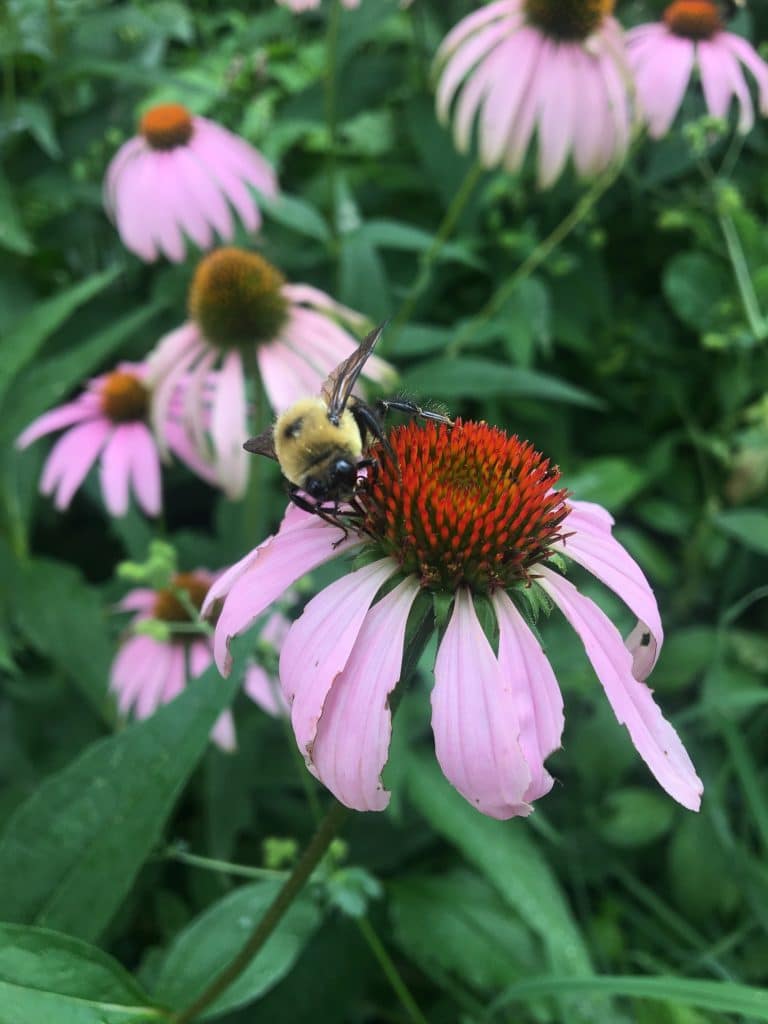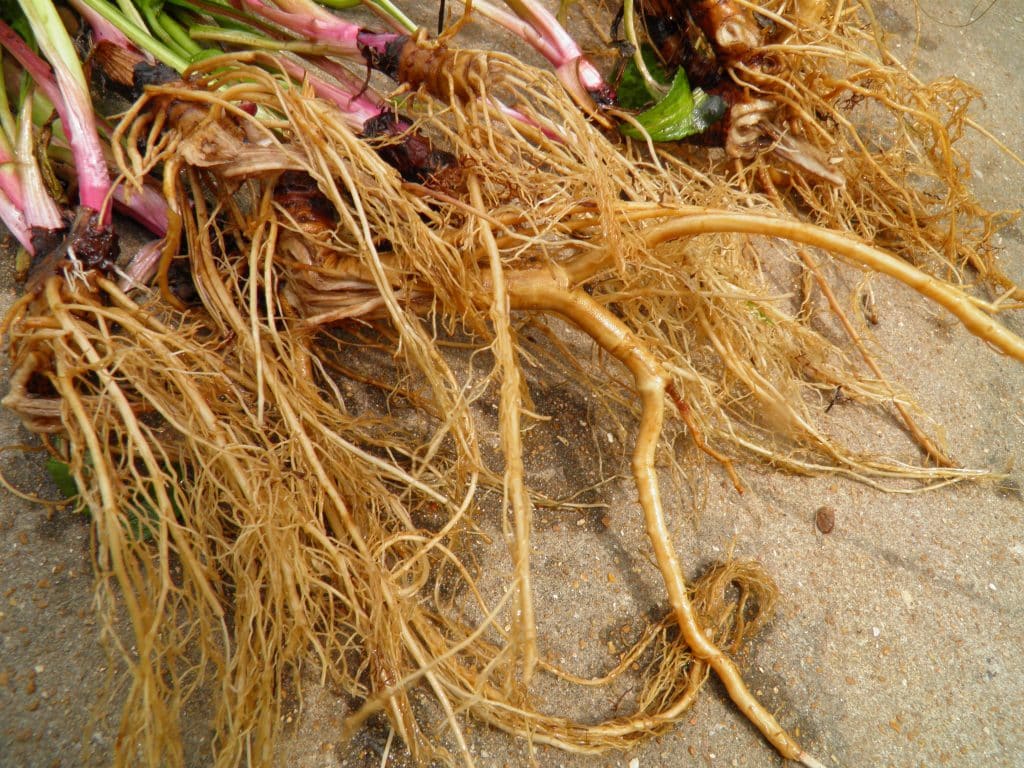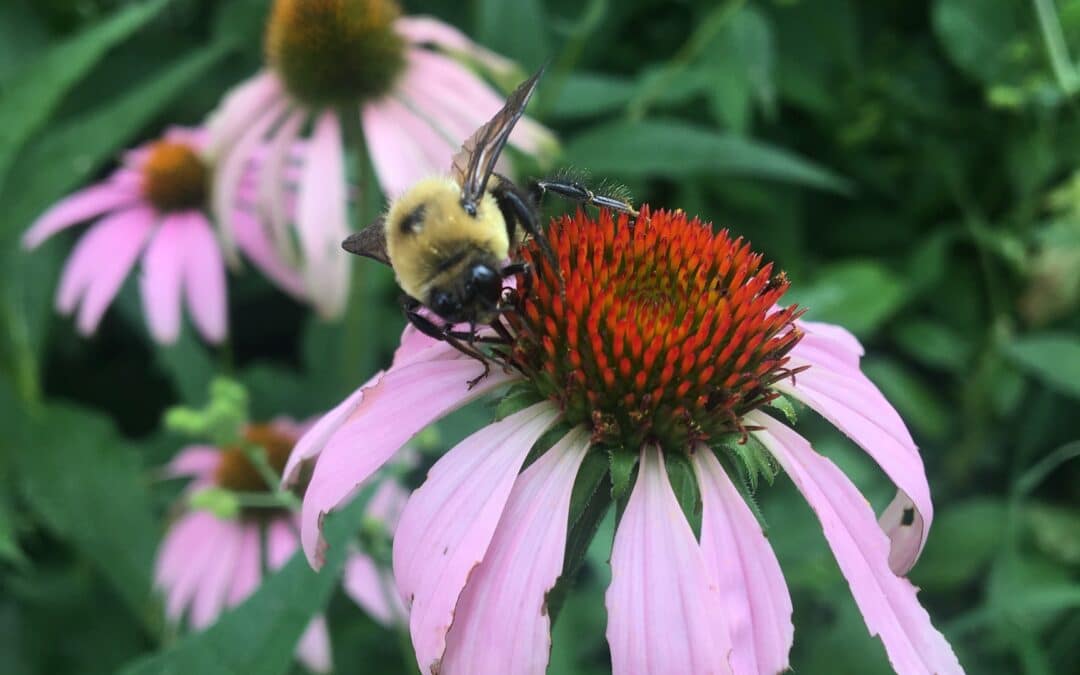The renowned Echinacea
When taken right away
Stimulates immunity
Keeps a cold at bay
This purple daisy flower
Has roots infused with grace
Such antiseptic power
It’s coming in first place!
Native to North America
The Indians used this herb
For snake bites and rabid dog
Its actions were superb
It’s not for daily use
One must take in moderation
And it’s been so abused
It requires conservation
A tonic oh so good
Apply to your infection
Purify the blood
Decrease your inflammation
Laryngitis, Pharyngitis
Conditions of catarrh
Sinusitis, Prostatitis
Echinacea is a star!
by Sylvia Seroussi Chatroux, MD

All About Echinacea
Once on the endangered species list, this plant made a surprising comeback because it is a popular pollinator garden plant!
It might surprise you to know that Echinacea contains vitamins A, B1, B2, B3, C and E, calcium, iron, magnesium, manganese, phosphorus, potassium, selenium and zinc. It’s not a plant that you’d find yourself wanting to eat though nibbling on the freshly sprouted leaves in the spring is a surprising experience that will leave your mouth a bit tingly and numb!
Most people know about Echinacea’s stimulant actions, especially relating to the immune system. Because of this stimulating action, he is great to take when you feel a cold coming on. However, be careful when treating illnesses with Echinacea if you have an auto immune disease as his stimulating effect can cause your body to turn on itself, causing more problems. If you suffer from an auto immune disease, use Echinacea with caution.

In the past it has been recommended to use Echinacea for short term only, taking it for 1-3 weeks and then stopping but some research has shown that taking Echinacea long term has beneficial effects as well. While there is no issue with taking Echinacea long term, this plant works best with acute situations instead of chronic situations, making long term use unnecessary for most purposes.
Most commonly, the roots of Echinacea are used but studies indicate the other parts of him are useful too. In my experiences, I have found the aerial parts of Echinacea to be just as effective, if not stronger than, the root and have stopped harvesting the root altogether. Because I am harvesting the aerial parts, I do not need to kill the plant to harvest the medicine.
The roots give off the same tingling sensation as the leaves and are used by Native Americans for toothaches. They also use root poultices to place on other areas of the body to relieve pain, heal wounds and treat snake bites and spider bites. I have used it with success on brown recluse spider bites as an extract internally and mixed into a paste using activated charcoal and fresh mashed Plantain leaf with the extract and applying it to the bite site then bandaged. I changed the poultice hourly while taking Echinacea hourly as well. It’s best to have a doctor monitor the spider bite.

Besides being an immune stimulant, Echinacea works on the body as an alterative, restoring the body systems to their natural state. He cleanses the blood, aiding the body in healing through this process. For septicemia and septic infections, Echinacea has been used with great success. Echinacea also works directly with the lymphatic system to help clear stagnation.
Echinacea is great to call on in times of acute and chronic illnesses. Take it at the first sign of a cold, flu, sore throat, sinus infection, bronchitis, arthritis, fevers, candida overgrowth, yeast infections and more.
He is also a great complimentary herb to use when battling cancer. Echinacea strongly inhibits tumor growth as well as preserves white blood cells in patients going through radiation treatment. Gail Faith Edwards has seen good results using Echinacea in a dosage of half the patient’s body weight in drops twice daily starting a week before treatment and used continuously throughout treatment to remain resistant to harsh side effects during chemotherapy and radiation.

Echinacea works really well as a tincture or a tea. Both can be taken internally or applied externally as part of a poultice or compress.
Echinacea can be powdered to add to wounds as well and can be combined with other powdered herbs to make a wound powder.
Fun Echinacea Related Videos and Resources

Want to learn to make Echinacea Throat Spray with your kids? Check out my new Monday Making series. This week’s episode is on making Echinacea Throat Spray! https://www.youtube.com/watch?v=uM3DlGdZd70

Want to listen to “The Gift of the Bear”? This story is from the Echinacea issue of Herbal Roots zine and it can be found on YouTube here:https://www.youtube.com/watch?v=epHQ0NNQnJU

Want to learn MORE about Echinacea? Check out my eBook on this vivacious plant! https://herbalrootszine.com/product/echinacea-issue-21/

